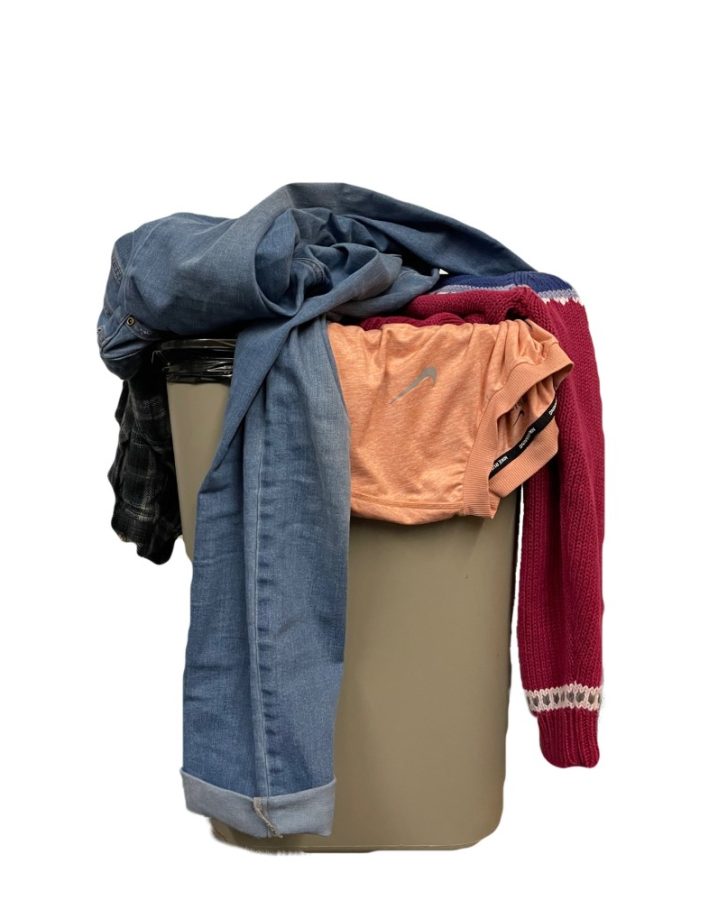photo courtesy of Sofia Guerra
Fast fashion produces low-quality clothing that leads to increased waste
Where Did My Clothes Come From?
February 3, 2022
Fashion dominates everyone’s lives in how they present themselves and how they wish to be perceived. Brands and clothing organizations have come to realize that they can manipulate self-expression for profit, and thus fast fashion emerged. Analysts of the fashion industry focus on society’s wants, desires and insecurities, and play to them to create the perfect clothing in the eyes of the fashion brands. They do so by pumping out as many designs as possible to generate hype and profit, further integrating fast fashion into society. The fashion industry is designed such that people need to buy clothes every season if they want to stay consistent with trends. As fashion brands increase the production of clothing, the consumers become used to fast releases of new clothing. To produce fast and cheap clothing for all seasons, fashion brands have to manufacture their clothing with as few resources as possible. The solution fast fashion companies arrived at is manufacturing in underdeveloped countries, allowing them to spend the least amount of money possible. A large number of workers are needed to create fast and cheap clothing, so manufacturers are unable to create humane conditions for their workers.
These foreign manufacturing companies pay their workers minimum wage, and oftentimes, minimum wage is only a fraction of living wage. The average Indian garment worker receives 56 cents per hour; the average Bangladeshi garment worker receives 33 cents per hour. Without sufficient income, garment workers do not have enough to provide their families with education, food and rent. Due to the insufficient wage, even children have to work in the garment factories. Shockingly, 60% of garment workers are under 18. Families become trapped in the vicious cycle of poverty. Fast fashion companies increased their production rate which affected the consumers’ demand for clothing, resulting in below-subsistence wages for garment workers.
To help, we can buy clothes from ethical companies, purchase second-hand clothing, be conscious of where our clothes come from and educate our peers. Local shops are always a good option when looking for ethically-produced clothing. Buying from these shops also helps the local community. With thrift stores rising in popularity, they’re also a good option as buying from sustainable brands is often too expensive. Buying from thrift stores—“thrifting”—means that the clothes are second-hand. Thrift stores can be a cheap alternative with a wide range of styles to pick and choose from. Research from the Sustainability Institute says that everyday, a truckload of clothing is either burnt or trashed. By purchasing second-hand clothing, we reduce the production rate of clothes over time. Some of these solutions may not work for everyone, so learning where our clothes come from and educating ourselves can have a big impact on those affected by fast fashion. Researching clothing brands to find whether they are ethical or not can take a lot of time and energy, but the website, “Good For You” can lift this burden. “Good For You” was founded by Sandra Capponi and Gorden Renouf in 2015. The website gives useful information on the brands and an ethicality rating. The website also focuses on environmental impact, labor rights and animal protection. Alternatives to fast fashion help reduce the amount of fast fashion.
Emma Len is a contributing writer.
This piece was originally published in Inkwell’s Fashion Issue.
